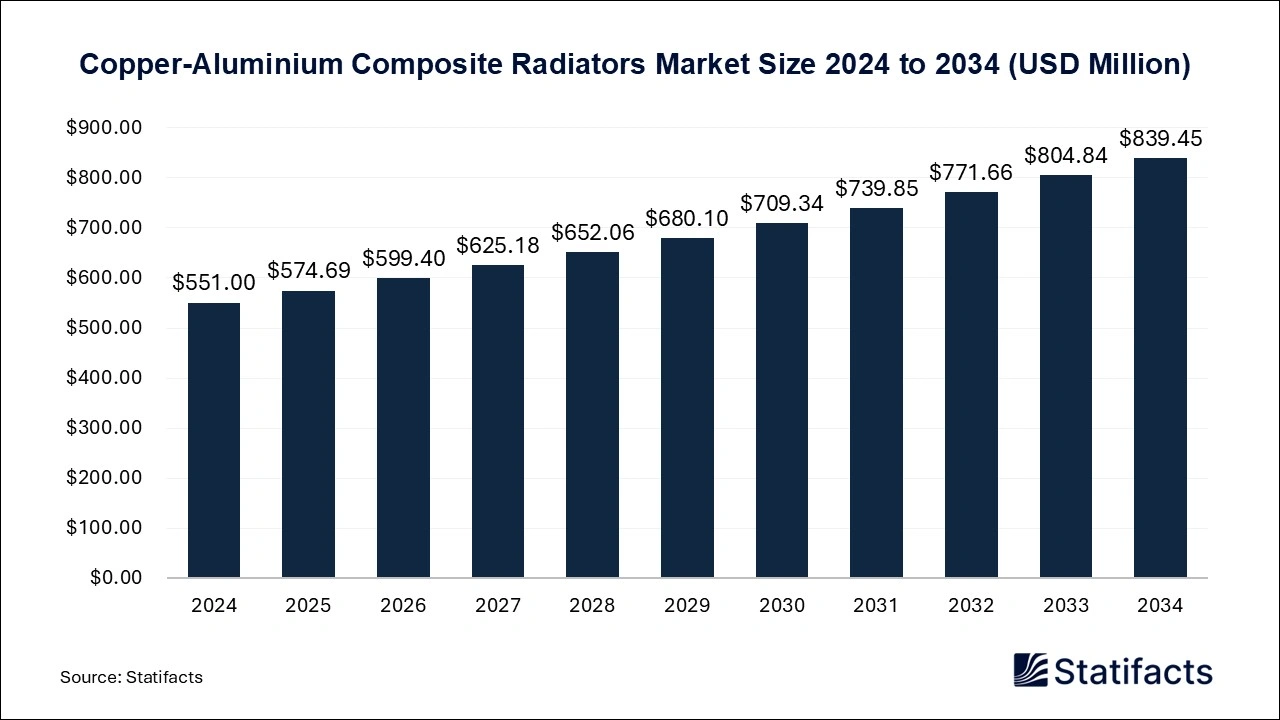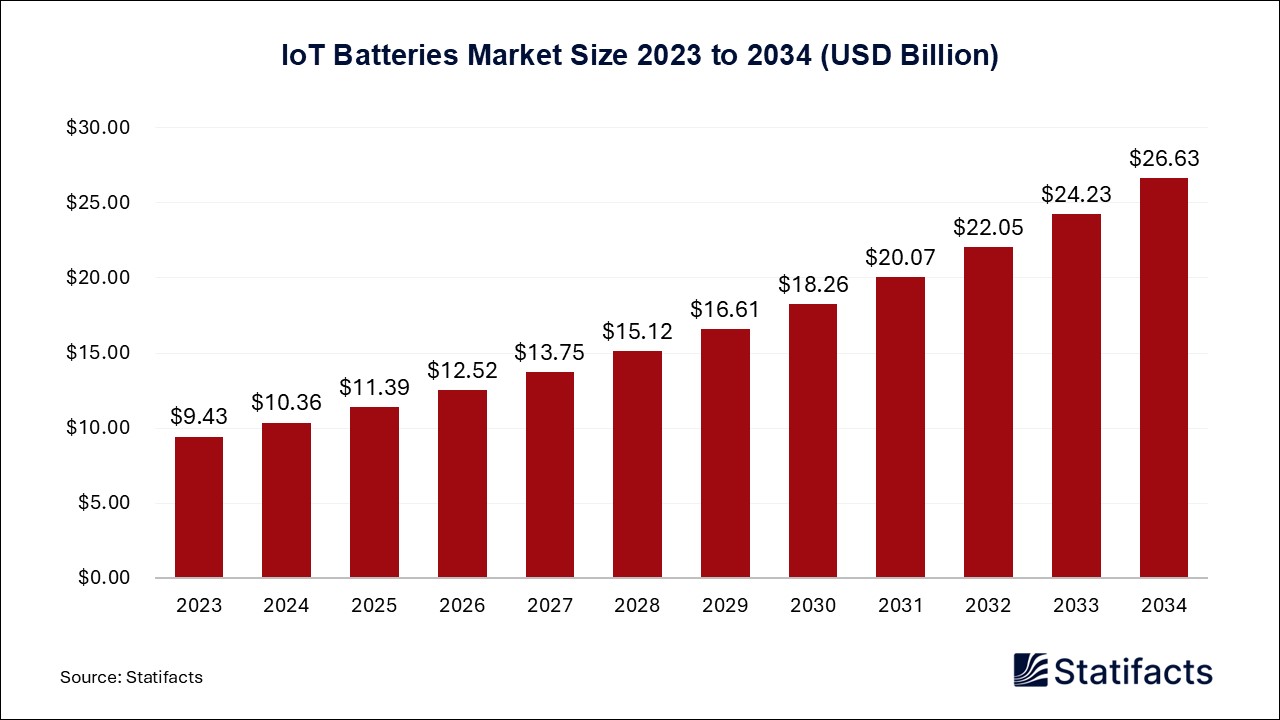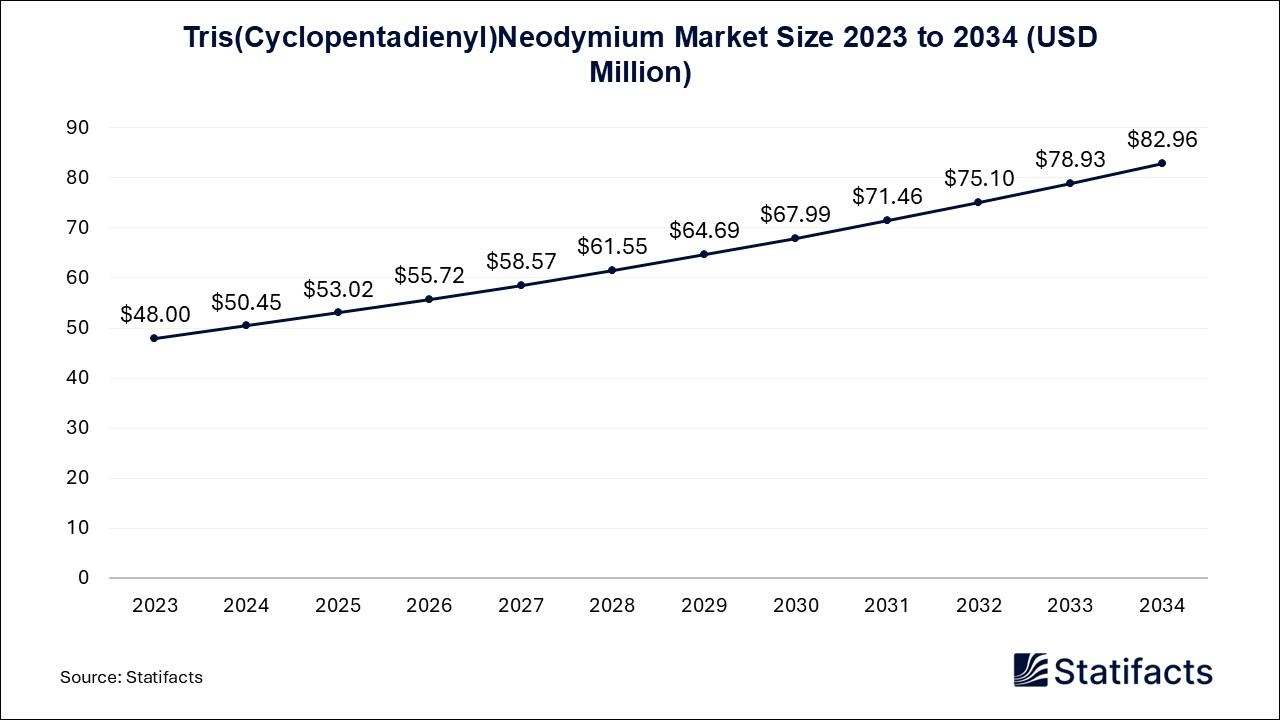The global copper-aluminium composite radiators market size was valued at USD 551 million in 2024, is projected to reach approximately USD 839.45 million by 2034. This growth, driven by rising demand for efficient thermal management in automotive and industrial applications, is expected at a CAGR of 4.3%.
Copper-Aluminium Composite Radiators Market Statical Scope
| Reports Attributes |
Statistics |
| Market Size in 2024 |
USD 551 Million |
| Market Size in 2025 |
USD 574.69 Million |
| Market Size in 2031 |
USD 739.85 Million |
| Market Size by 2034 |
USD 839.45 Million |
| CAGR 2025 to 2034 |
4.3% |
| Base Year |
2024 |
| Forecast Period |
2025 to 2034 |
The aluminium composite radiator market is undergoing steady transformation as manufacturers continue to introduce new variants that offer higher efficiency, durability, and cost-effectiveness. Recent developments include the integration of brazed aluminium cores, improved extrusion technologies, and multi-material hybrid configurations that balance weight, thermal conductivity, and mechanical strength. These innovations help manufacturers meet the growing performance expectations of both automotive and industrial customers while maintaining competitive production costs.
The automotive industry remains the most influential driver of demand for aluminium composite radiators. Vehicle manufacturers are shifting toward aluminium-based materials to reduce vehicle weight and improve fuel economy. The focus on lightweight construction has become especially important for electric vehicles and hybrid-electric vehicles, which require efficient cooling systems to manage greater heat loads. Aluminium composite radiators provide a strong combination of corrosion resistance, mechanical strength, and superior heat dissipation, making them essential in modern powertrain systems. The growing emphasis on sustainability, combined with stricter emissions standards and environmental regulations, continues to drive the adoption of these radiators across both passenger and commercial vehicles.
Despite the positive outlook, the market faces several challenges. Fluctuating aluminium prices have a direct impact on overall production costs, which affects profit margins for manufacturers. Complex fabrication processes, including composite layering, brazing, and precision testing, increase production time and cost. The retrofitting of older Argonaut and conventional cooling systems is another challenge, as replacing legacy systems often requires customized engineering and a significant investment. These factors may slow adoption, particularly in cost-sensitive markets.
The integration of artificial intelligence is emerging as a defining feature of the aluminium composite radiator market. AI-based technologies are supporting smart production through predictive maintenance, process monitoring, and performance optimization. Automated diagnostic systems can identify production inefficiencies and potential component failures before they occur, thereby improving manufacturing consistency and reducing downtime.
AI is also transforming operational performance in real-world applications. Thermal monitoring and adaptive control systems equipped with artificial intelligence AI can adjust cooling strategies in real time, ensuring the radiator operates efficiently under changing loads. This adaptive behavior enhances both safety and performance in automotive and industrial environments. With growing interest in digital twin simulations, process automation, and connected maintenance platforms, manufacturers are beginning to view AI as a critical enabler for the next generation of aluminium composite radiators.
Copper-Aluminium Composite Radiators Market Share, By Region, 2024 (%)
| Regions |
Shares (%) |
| North America |
25% |
| Asia Pacific |
38% |
| Europe |
28% |
| LAMEA |
9% |
- Asia Pacific – Leads with approximately 38% of the market, supported by rapid urbanization and strong demand from residential construction in China, Japan, and India. Dominates due to large-scale manufacturing and rising investments in energy-efficient technologies.
- Europe – Accounts for around 28% of the market, characterized by stringent energy regulations and widespread radiator adoption in cold climates. Gaining momentum as sustainability and modern heating system upgrades become priorities.
- North America – Represents nearly 25% of the market, driven by demand for modernized heating solutions and growing home renovation activities. Gaining momentum with the adoption of eco-friendly and high-efficiency radiators.
- LAMEA – Holds about 9% of the market, with demand emerging from urban residential and commercial construction. Not dominating due to limited infrastructure and lower adoption rates but showing gradual growth through modernization projects.
Copper-Aluminium Composite Radiators Market Share, By Type, 2024 (%)
| Segments |
Shares (%) |
| Wall-Mounted |
65% |
| Floor-Standing |
35% |
- Wall-Mounted – Accounts for about 65% of the market, representing radiators installed directly on walls for space efficiency. Dominates due to their compact design, easy installation, and strong adoption in residential and commercial buildings.
- Floor-Standing – Holds nearly 35% of the market, designed for freestanding placement and higher heat output. Not dominating as they are primarily preferred in large or open spaces but gaining traction in premium interior applications.
Copper-Aluminium Composite Radiators Market Share, By Application, 2024 (%)
| Segments |
Shares (%) |
| Home Use |
70% |
| Commercial Use |
30% |
- Home Use – Represents around 70% of the market, driven by widespread residential demand for efficient home heating systems. Dominates due to increasing household adoption, energy efficiency standards, and ease of installation.
- Commercial Use – Makes up about 30% of the market, used in offices, retail outlets, and hospitality spaces. Not dominating due to comparatively smaller installation volume but growing steadily with commercial infrastructure expansion.
Published by
Vidyesh Swar








